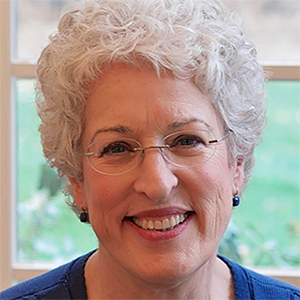How a deaf puppy is learning sign language to save his life
Published in Cats & Dogs News
CHARLOTTE, N.C. -- Frankie, a blue-eyed Catahoula Leopard Dog, was just a few weeks old when he was found abandoned on the side of a Charlotte street — one of more than 6 million animals dumped across the U.S. each year. Weighing only 7 pounds and riddled with hookworms, he was taken in by Angels to the Animals, a rescue group that hoped to give him a shot at survival.
But while rescuers are doing everything they can to save Frankie from becoming one of 920,000 animals euthanized annually, there’s an obstacle standing in the way of his adoption. Frankie is deaf, a common reason dogs are discarded and one that makes placement significantly harder.
“It’s difficult to find somebody who wants to take in a deaf dog,” said Melissa Lang, president of Angels to the Animals, the Denver, N.C.-based rescue that took Frankie in. “He can’t hear, ‘No,’ he can’t hear, ‘Frankie, stop.’”
North Carolina ranks second in the nation for the number of animals euthanized in shelters, a crisis fueled by chronic overcrowding and staffing shortages. This week, available kennel space at Charlotte-Mecklenburg Animal Care and Control’s facilities hit a record low. In response, the shelter waived adoption fees in hopes of placing 250 animals before the weekend.
“This is as serious as it gets,” the organization wrote in a Facebook post, noting that dozens of dogs “may not have a tomorrow.”
Advocates say dogs like Frankie, those with special needs, face even steeper odds. Many shelters lack the training or resources to care for deaf animals, leaving them more vulnerable to euthanasia.
In Charlotte, the number of dogs put down rose by 40 percent during June and July of 2022 compared to that same time period the year before, according to public records reviewed by The Charlotte Observer. Without greater community support, especially for animals with medical or behavioral needs, officials say that trend is likely to continue.
“They have to euthanize them because they need the space,” Lang said. “It’s just not a good long-term solution for a hearing or non-hearing dog.”
Still, Lang said more facilities are beginning to specialize in caring for animals with disabilities. Among them is Virginia-based Deaf Dogs Rock, which partners with rescues across the country to pull deaf dogs from kill shelters before it’s too late.
Euthanizing deaf dogs
Since its founding in 2012, Deaf Dogs Rock has helped thousands of deaf dogs find homes and provided adoptive families with training resources. The nonprofit also works to educate shelters — many of which, said founder Christina Lee, automatically euthanized deaf dogs until just the last decade.
“If you had a deaf puppy, it had to be destroyed,” Lee said. “Think about the message that sends out to everybody.”
Attitudes among breeders, she added, haven’t been much better. For years, some national breed clubs treated deafness as a genetic defect. The Dalmatian Club of America, for example, spent decades urging breeders to euthanize deaf puppies so the trait wouldn’t spread. Even after revising its policy in 2010 to allow adoption and limited breeding of dogs deaf in one ear, those dogs are still rarely considered for breeding.
Charlotte shelters don’t automatically euthanize deaf dogs, but like many cities, they don’t allow individual adopters to take the animals home. Instead, dogs with disabilities, hearing loss included, are labeled “rescue only,” meaning they can only be released to certified welfare groups.
The policy is meant to ensure special-needs dogs get the care they need, as shelters don’t have the funding or staff to handle the extensive vetting or medical care that rescues provide. But if a rescue doesn’t hear about the dog in time, it’s unlikely the animal will make it out alive.
“Once they find out [a dog] is deaf, God knows what happens to it,” said Lang. ”They sit in a shelter, which is horrible because they’re very limited on what they can do. It’s scary for dogs.”
Frankie, however, was lucky. He never entered the shelter system. Emaciated, dehydrated, and infested with hookworms, the tiny puppy came to Lang’s attention through word of mouth. She immediately arranged for emergency medical care.
Now, even as 5-month-old Frankie has recovered and grown stronger, Lang is still searching for his permanent home. If he isn’t adopted by the end of the month, Angels to the Animals may have no choice but to board him in a kennel until a family steps forward.
Using American Sign Language with dogs
Still, experts say there is hope. Some deaf individuals actively seek out deaf dogs, drawn by the potential for a deeper bond and a desire to offer them the care they deserve. With more special-needs rescues opening across the country, these adopters can now turn directly to organizations that specialize in dogs with disabilities.
“Every day I get emails from ... deaf community members looking for deaf dogs,” said Lee, founder of Deaf Dogs Rock. “They’re a very tight-knit culture and I think they can relate to a deaf dog.”
But identifying deafness isn’t always immediate. In many cases, hearing loss in puppies goes unnoticed for weeks or even months. That was true for Frankie, until his first foster family realized he didn’t respond to his name or react when objects fell out of sight.
Lang eventually conducted her own test, confirming that Frankie was deaf. Once a diagnosis is made, she said, the chances of adoption often drop, especially at rescues that aren’t known for working with special-needs animals.
Even so, Lang eventually found a family who wanted Frankie, a couple willing to adjust their training and lifestyle to meet his needs. Sarah Ziarko had long been interested in adopting a deaf dog, and when her husband, Andrew Boblit, spotted Frankie’s photo online, he didn’t hesitate to reach out.
They brought Frankie to their Iron Station home, captivated by his boundless energy and charmed by his bright eyes. They laughed at Frankie’s tendency to bark at rocks and were patient when it took extra effort to get his attention.
“Even though he can’t hear, he observes his surroundings and uses other senses more,” said Boblit.
When Lang offered a complimentary session with a trainer who specializes in American Sign Language, Boblit and Ziarko were eager to get started. But after introducing Frankie to their older dog, Bennington, the couple realized he wasn’t the right fit for their family.
“Frankie can’t hear our dog bark at him or indicate that he doesn’t want to play,” said Ziarko.
Lang now hopes to find Frankie a new home by the end of June. In the meantime, Ziarko and Boblit are continuing his sign language training using videos and written guides. So far, they say, it’s working. Frankie picked up the sign for “sit” and now responds without needing a treat.
“It’s a little more difficult because you have to visually get their attention as opposed to just calling their name,” said Boblit. “But I don’t feel like it’s any more energy or any more effort with a deaf dog than it is with a normal dog.”
Traditional dog training often pairs a hand gesture with a verbal cue, followed by a treat to reward and reinforce the behavior. But for deaf dogs, the verbal cue is removed entirely, and the dog relies solely on visual signals.
Lee is now fostering her tenth deaf dog, and she’s come to view deafness as a kind of “natural superpower.” Her dogs, she said, are often more attuned to subtle movements and emotional cues than their hearing counterparts.
“We say they’re like potato chips,” said Lee. “You can’t just have one.”
On a recent evening, Frankie raced through the backyard of his foster home as Ziarko introduced a few new signs. He paused, alert and eager, then leapt up to celebrate with his foster parents each time he got it right.
“It’s a full-time job, a full-time responsibility to take care of a dog,” said Boblit. “It’s just personal preference if you’re willing to love a deaf dog like you would a hearing dog.”
©2025 The Charlotte Observer. Visit at charlotteobserver.com. Distributed by Tribune Content Agency, LLC.








Comments